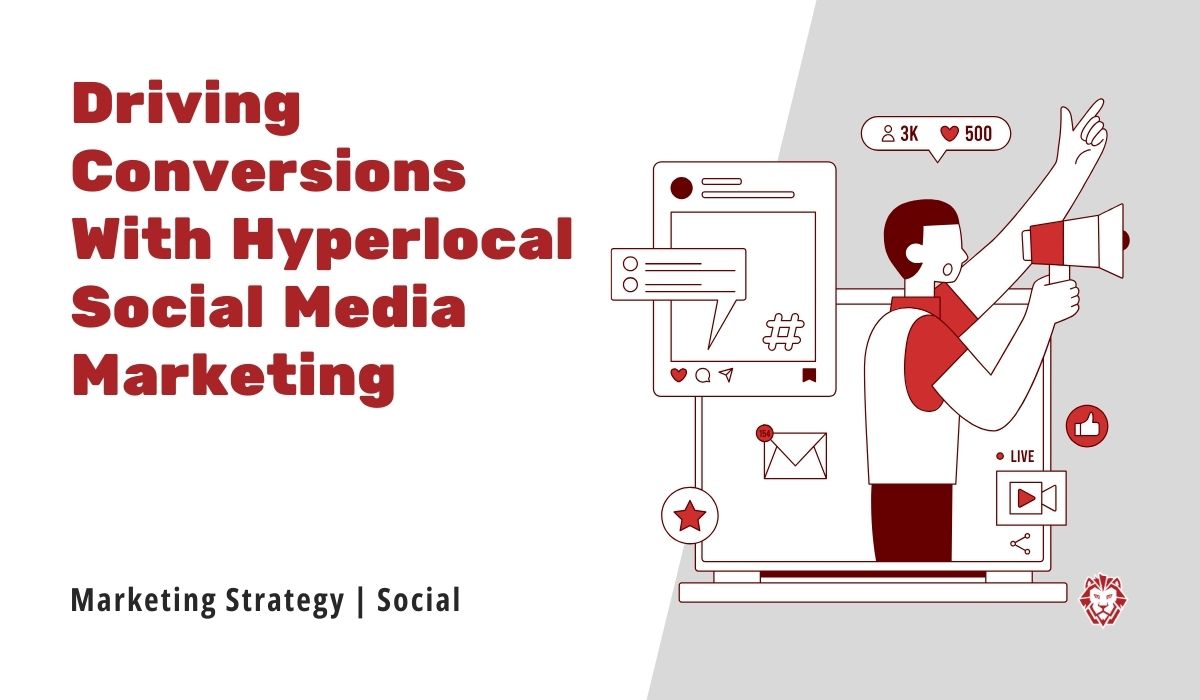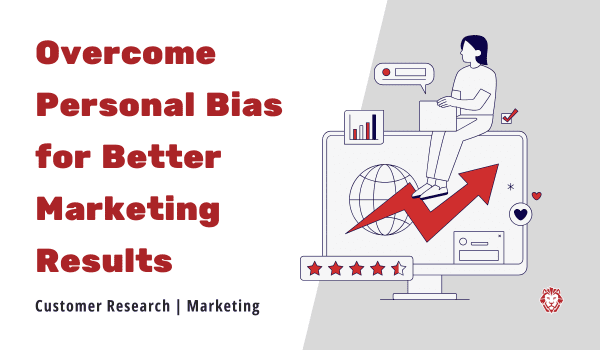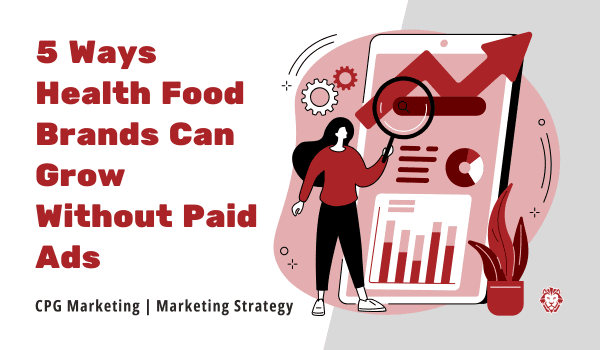
Driving Conversions With Hyperlocal Social Media Marketing
How to Track Your Social Media ROI
Today businesses are constantly seeking ways to drive conversions and maximize their online presence. In recent years, hyperlocal social media marketing has emerged as a powerful strategy that has emerged. By targeting specific geographical areas and tailoring content to local audiences, businesses can effectively engage with potential customers and drive conversions. Let’s explore the importance of hyperlocal marketing and delve into key components, strategies, measuring success, overcoming challenges, and future trends in this exciting field.
Understanding Hyperlocal Social Media Marketing
Hyperlocal marketing involves delivering targeted messages and content to individuals based on their specific location. This approach recognizes that consumers are more likely to engage with businesses that understand their unique needs and preferences. By focusing on the local community, businesses can build trust, establish meaningful connections, and ultimately increase conversions.
The Importance of Hyperlocal Marketing
Hyperlocal marketing plays a crucial role in today’s digital landscape. With the rise of mobile devices and location-based services, consumers have become increasingly reliant on their smartphones to find businesses and services in their immediate vicinity. By implementing hyperlocal marketing strategies, businesses can tap into this consumer behavior and effectively reach their target audience.
When businesses tailor their marketing efforts to specific locations, they demonstrate a genuine understanding of their customers’ needs. This personalized approach helps businesses stand out from the competition and build stronger relationships with their local customer base. By catering to the unique preferences and interests of their target audience, businesses can create a sense of community and loyalty.
Key Components of Hyperlocal Social Media Marketing
To effectively implement hyperlocal social media marketing, businesses must consider several key components.
Accurate and Up-to-Date Location Data
Ensuring that your business information is consistent across various platforms such as Google My Business, Facebook, and Yelp is vital for customers to find you. Having accurate and up-to-date location data helps potential customers easily locate your business and contact you for their needs.
Furthermore, accurate location data allows search engines to understand the relevance of your business to local searches. This, in turn, improves your search engine rankings and increases your visibility to potential customers.
Active Presence on Social Media Platforms
Maintaining an active presence on social media platforms is essential for hyperlocal marketing success. By regularly posting engaging content and interacting with local users, businesses can establish themselves as trusted authorities in their geographical areas.
Through social media, businesses can showcase their expertise, share valuable information, and engage with their audience in real-time. By leveraging location-specific hashtags, businesses can expand their reach and connect with potential customers who are actively searching for products or services in their area.
User-Generated Content
User-generated content is a powerful tool in hyperlocal social media marketing. Encouraging customers to share their experiences and testimonials can significantly enhance the credibility and visibility of a business.
By highlighting positive testimonials and reviews from satisfied customers, businesses can inspire trust and increase conversions. User-generated content also allows businesses to tap into the social proof phenomenon, where potential customers are more likely to trust the opinions and experiences of their peers.
User-generated content provides businesses with valuable insights into their customers’ preferences and behaviors. By analyzing this content, businesses can refine their marketing strategies and tailor their offerings to better meet their customers’ needs.
Hyperlocal social media marketing is a powerful strategy for businesses looking to connect with their local audience. By understanding the importance of hyperlocal marketing and implementing key components such as accurate location data, an active social media presence, and user-generated content, businesses can establish themselves as trusted authorities in their communities and drive conversions.
Strategies for Driving Conversions
Driving conversions through hyperlocal social media marketing requires a comprehensive approach that goes beyond just optimizing your social media profiles. While that is an essential strategy, there are other tactics that can help you maximize your results and achieve your conversion goals.
Optimizing Your Social Media Profiles
An essential strategy for driving conversions through hyperlocal social media marketing is optimizing your social media profiles. Ensure that all relevant business information, including location, contact details, and opening hours, is accurately listed. Utilize keywords and phrases that resonate with local customers within your profile descriptions to improve search visibility.
However, optimizing your profiles is just the first step. To truly stand out and make an impact, you need to go beyond the basics.
Leveraging local imagery and showcasing your involvement in the community can help establish a strong connection with potential customers. By highlighting local partnerships, events, or charitable initiatives, businesses can foster a sense of loyalty and encourage conversions. Sharing photos of your business participating in community events or supporting local causes can create a positive impression and make people more likely to choose your products or services.
Additionally, consider featuring customer testimonials or reviews on your social media profiles. Positive feedback from satisfied customers can build trust and credibility, making it more likely for potential customers to convert.
Creating Engaging Local Content
While optimizing profiles is crucial, sharing relevant and engaging content is equally important. Tailor your posts to reflect the interests and needs of your local audience. Share news, events, and updates that impact your community.
However, don’t limit yourself to just sharing news and updates. Consider creating local guides or tutorials that provide valuable information to potential customers. This type of content positions your business as a helpful resource and can significantly increase engagement and conversions. For example, if you own a fitness center, you could create a guide on the best hiking trails in your area or a tutorial on how to properly stretch before a workout.
Engaging with your audience through comments and direct messages can help foster a sense of community and build relationships. Responding to questions, addressing concerns, and showing genuine interest in your followers can go a long way in driving conversions.
Utilizing Geo-Targeted Ads
One effective way to reach your target audience and drive conversions is by utilizing geo-targeted ads. Platforms like Facebook and Google Ads allow businesses to target their advertisements to specific locations. By tailoring your ads to local audiences, you can ensure that your message reaches the right people at the right time.
However, simply running ads is not enough. To make the most of your geo-targeted ads, consider running promotions or offers that are only available to users within a certain radius of your business location. This approach creates a sense of exclusivity and urgency, further motivating potential customers to convert. For example, you could offer a limited-time discount or a free gift with purchase for customers who visit your store within a specific timeframe.
Regularly analyzing and optimizing your ad campaigns is crucial for driving conversions. Monitor the performance of your ads, test different targeting options, and make adjustments based on the data you collect. This continuous optimization will help you maximize your return on investment and drive more conversions.
While optimizing your social media profiles is an important strategy for driving conversions, it is just one piece of the puzzle. By leveraging local imagery, creating engaging local content, and utilizing geo-targeted ads, you can create a comprehensive hyperlocal social media marketing strategy that drives conversions and helps your business thrive.
Measuring the Success of Your Hyperlocal Campaign
Running a hyperlocal social media marketing campaign can be a powerful way to reach and engage with your target audience. However, it’s important to measure the success of your campaign to ensure that you are optimizing your strategy and driving conversions. By implementing conversion tracking tools such as Google Analytics, you can gain valuable insights into user behavior and make data-driven decisions.
Setting Up Conversion Tracking
Conversion tracking is a crucial step in measuring the success of your hyperlocal campaign. By setting up conversion tracking, you can identify which channels and tactics are generating the most conversions. This information allows you to allocate your resources more effectively and refine your advertising strategy.
Google Analytics is a popular tool for conversion tracking. It allows you to track various actions on your website, such as clicks, form submissions, and purchases. By analyzing this data, you can gain a deeper understanding of how users are interacting with your hyperlocal campaign and make informed decisions to optimize your marketing efforts.
Analyzing Social Media Metrics
In addition to tracking conversions, analyzing social media metrics provides valuable insights into the performance of your hyperlocal campaign. Engagement metrics such as likes, comments, and shares can help you gauge the effectiveness of your content and adjust your strategy accordingly.
There are various social media analytics tools available that can help you monitor and analyze these metrics. These tools allow you to identify trends, understand audience demographics, and adapt your messaging to resonate with your target audience. Continual analysis and optimization are key to driving conversions and maximizing the impact of your hyperlocal social media marketing efforts.
Adjusting Your Strategy Based on Data
Based on the insights derived from conversion tracking and social media metrics, it’s essential to adjust and refine your hyperlocal social media marketing strategy continually. Experiment with different content formats, posting schedules, and advertising channels to optimize your reach and engagement.
By making data-driven decisions, you can allocate your marketing budget effectively. By investing in tactics that have proven successful in driving conversions, you can maximize the return on your marketing investment and generate sustained growth for your hyperlocal campaign.
Remember, measuring the success of your hyperlocal campaign is an ongoing process. Continuously monitor and analyze the data to identify areas for improvement and make informed decisions to optimize your strategy. By doing so, you can ensure that your hyperlocal social media marketing efforts are driving conversions and delivering the desired results.
Overcoming Challenges in Hyperlocal Social Media Marketing
Dealing with Limited Reach
One common challenge in hyperlocal social media marketing is the potential for limited reach, especially for businesses operating in smaller or niche markets. To overcome this challenge, it’s crucial to identify and engage with local influencers or community groups that have a significant following.
Collaborating with local influencers or partnering with relevant organizations can help expand your reach and tap into new audiences. By leveraging their established networks, you can access a larger pool of potential customers and increase conversions.
Furthermore, consider hosting local events or sponsoring community initiatives to increase your visibility. By actively participating in local activities, you can build stronger connections with the community and create a positive brand image.
Utilizing geotargeting features on social media platforms can help you reach specific audiences within your target location. By tailoring your content and ads to the interests and preferences of local users, you can maximize engagement and drive more traffic to your business.
Navigating Privacy Concerns
While hyperlocal social media marketing offers numerous benefits, it’s important to navigate privacy concerns carefully. Ensure that you comply with applicable privacy laws and regulations, such as obtaining users’ consent before collecting their location data.
By being transparent about how you use and protect user data, you can build trust with your audience and mitigate any potential concerns. Transparency and respect for privacy are essential in successfully implementing hyperlocal social media marketing strategies.
In addition to privacy concerns, it’s crucial to address security issues when implementing hyperlocal social media marketing. Protecting your customers’ data from cyber threats should be a top priority. Invest in robust security measures, such as encryption and regular vulnerability assessments, to safeguard sensitive information.
Consider implementing a privacy policy on your website and social media platforms to inform users about the data you collect, how it is used, and their rights regarding their personal information. This will not only demonstrate your commitment to privacy but also help you comply with legal requirements.
Ensuring Consistency Across Locations
For businesses operating multiple locations, maintaining consistency across all social media channels can be challenging. It’s crucial to develop clear guidelines and standards for branding, messaging, and content creation to ensure that each location aligns with the overall brand identity.
Regularly monitor and audit the social media presence of each location to confirm adherence to these guidelines. Consistency across locations builds brand recognition and trust, making it more likely for potential customers to convert regardless of the local store or branch they encounter.
In addition to guidelines, consider implementing a centralized social media management system that allows you to oversee and control the content shared across all locations. This will streamline the process and ensure that your brand’s voice and messaging remain consistent.
Encourage collaboration and communication among your social media teams across different locations. By sharing best practices and insights, you can foster a sense of unity and ensure that everyone is working towards the same goals.
Lastly, regularly analyze the performance of each location’s social media efforts. Identify areas of improvement and share success stories to motivate and inspire your teams. By continuously refining and optimizing your strategies, you can achieve consistent and impactful hyperlocal social media marketing across all locations.
Future Trends in Hyperlocal Social Media Marketing
The Rise of Local Influencers
In the future, local influencers are expected to play an increasingly significant role in hyperlocal social media marketing. These influencers have established themselves as trusted figures within their communities and possess the ability to sway the opinions and purchase decisions of their followers.
Local influencers are individuals who have built a strong online presence by creating content that resonates with their local audience. They often have a deep understanding of the community’s interests, preferences, and needs. By collaborating with these influencers, businesses can tap into their existing follower base and gain access to a highly targeted audience.
When partnering with local influencers, businesses should consider the authenticity and alignment of the influencer’s content with their brand values. By choosing influencers who genuinely resonate with their target audience, businesses can enhance their hyperlocal reach and engagement.
Local influencers can provide valuable insights and feedback to businesses, helping them refine their products or services to better meet the needs of the local community. This collaborative approach can foster a sense of trust and loyalty among customers, ultimately driving conversions on a hyperlocal level.
Advances in Location-Based Technology
Advances in location-based technology will continue to shape the future of hyperlocal social media marketing. Technologies such as geofencing and beacon technology enable businesses to deliver highly targeted and personalized messages to individuals within specific geographical areas.
Geofencing allows businesses to set up virtual boundaries around a specific location, such as a store or event venue. When a user enters or exits the geofenced area, they can receive targeted notifications, offers, or promotions directly on their mobile devices. This level of personalization enhances the user experience and increases the likelihood of conversions.
Similarly, beacon technology utilizes small Bluetooth devices to transmit signals to nearby mobile devices. Businesses can strategically place these beacons in their physical locations to send relevant information, such as special discounts or product recommendations, to customers who are in close proximity. This real-time engagement can drive foot traffic and encourage immediate purchases.
As location-based technology continues to evolve, businesses should stay informed about these developments and explore ways to incorporate them into their hyperlocal marketing strategies. By leveraging these tools effectively, businesses can deliver timely and relevant messages to potential customers, increasing their chances of conversion.
The Impact of Changing Social Media Algorithms
Social media platforms frequently update their algorithms, which can impact organic reach and engagement. It’s important for businesses engaged in hyperlocal social media marketing to stay up-to-date with these algorithm changes and adjust their strategies accordingly.
Algorithm changes can affect the visibility of businesses’ content in users’ feeds, making it crucial to understand how to optimize content for maximum reach. By monitoring the performance of their posts and analyzing engagement metrics, businesses can adapt their content creation and distribution strategies to maintain high levels of engagement and reach within their local communities.
Businesses should explore alternative strategies to diversify their social media presence. For example, they can leverage multiple platforms to reach a wider audience or invest in paid advertising to boost visibility. By staying agile and responsive to algorithm changes, businesses can ensure that their hyperlocal social media marketing efforts remain effective in driving conversions.
Driving conversions with hyperlocal social media marketing offers businesses a unique opportunity to connect with their audience on a local level. By understanding the importance of hyperlocal marketing, implementing key components, and utilizing effective strategies, businesses can forge meaningful connections, boost conversions, and achieve sustainable growth. It is crucial to continually measure the success of your hyperlocal campaigns, overcome challenges, and embrace future trends in order to stay ahead in this dynamic field.
Need help with your Hyperlocal Social Media Marketing? Connect with our team today!



